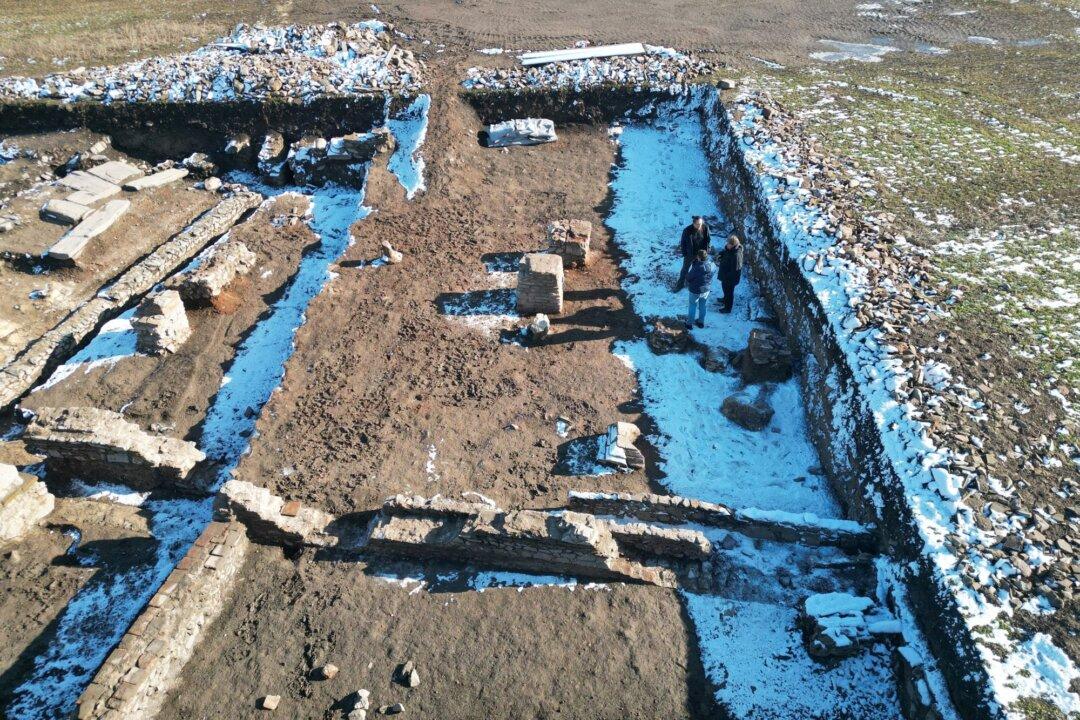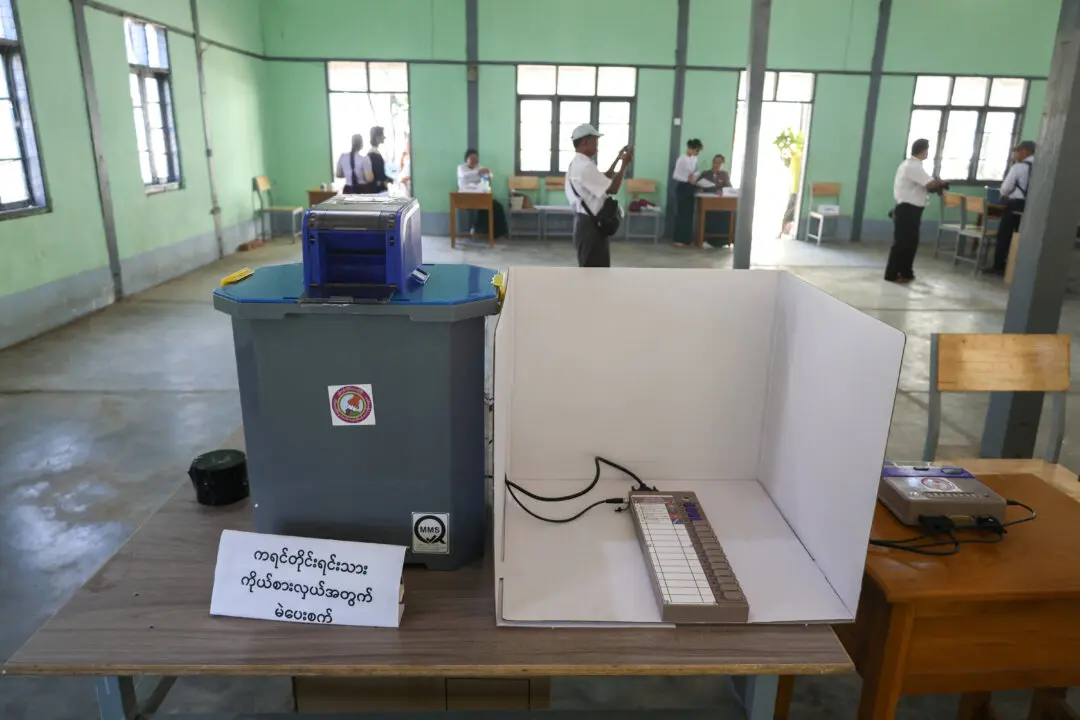KOSTOLAC, Serbia—Braving bitter cold and wind, archaeologists in Serbia surveyed the site of an ancient Roman triumphal arch, one of only a handful in the Balkans, that dates back to the third century.
The triumphal arch was discovered in December at the site of Viminacium, a Roman city near the town of Kostolac, 70 km (45 miles) east of Belgrade.





